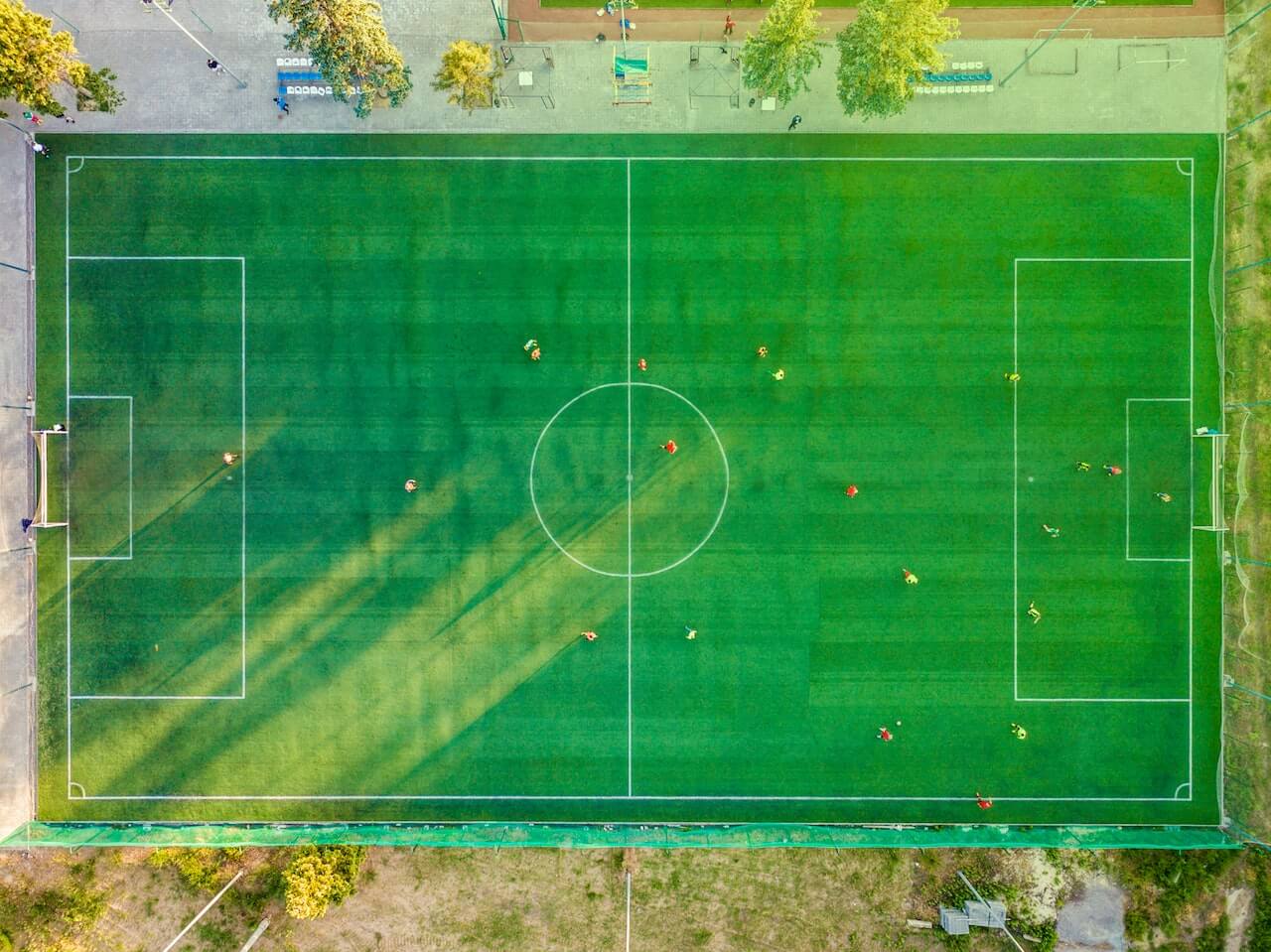Soccer formations are an essential aspect of the game, and they play a crucial role in determining the success of a team. The 7v7 formation is one of the most popular formations in soccer, and it is commonly used in youth leagues and recreational leagues.
The 7v7 formation consists of seven players on each team, including a goalkeeper. This formation is ideal for smaller fields, and it allows players to have more space and freedom to move around. The 7v7 formation is also an excellent way to introduce young players to the game of soccer and help them develop their skills.
Importance of Soccer Formations
Soccer formations are an essential aspect of the game, and they can significantly impact the outcome of a match. A formation is essentially a tactical plan that a team adopts to organize its players on the field. It determines how many players will be in defense, midfield, and attack, and it can also dictate the style of play.
One of the primary benefits of using a formation is that it allows a team to be more organized and structured. It gives players specific roles and responsibilities, which helps to minimize confusion and improve communication. A well-structured formation can also make it easier for players to move the ball around the field and create scoring opportunities.
Another advantage of using a formation is that it allows a team to adapt to different situations and opponents. For example, a team may choose to use a more defensive formation against a strong attacking team or a more attacking formation against a weaker opponent. By adjusting the formation, a team can exploit the weaknesses of its opponents and maximize its own strengths.
Overall, soccer formations are a crucial aspect of the game, and they require careful consideration and planning. By choosing the right formation and using it effectively, a team can gain a significant advantage over its opponents and increase its chances of success.
Overview of 7v7 Formations
When it comes to playing 7v7 soccer, the formation you choose can greatly impact your team’s performance. There are several different formations to choose from, each with its own strengths and weaknesses. Here, we’ll take a look at some of the most popular 7v7 soccer formations and what they entail.
One of the most commonly used formations in 7v7 soccer is the 2-3-1 formation. This formation features two defenders, three midfielders, and one forward. The two defenders provide a solid defensive base, while the three midfielders are responsible for both attacking and defending. The lone forward is tasked with scoring goals and creating opportunities for their teammates.
Another popular formation is the 3-2-1 formation. This formation features three defenders, two midfielders, and one forward. The three defenders provide a strong defensive base, while the two midfielders are responsible for both attacking and defending. The lone forward is tasked with scoring goals and creating opportunities for their teammates.
The 2-2-2 formation is also a popular choice for 7v7 soccer. This formation features two defenders, two midfielders, and two forwards. The two defenders provide a solid defensive base, while the two midfielders are responsible for both attacking and defending. The two forwards are tasked with scoring goals and creating opportunities for their teammates.
Ultimately, the formation you choose should depend on your team’s strengths and weaknesses, as well as the strengths and weaknesses of your opponents. By understanding the various 7v7 soccer formations and what they entail, you can make an informed decision about which formation is best for your team.
Offensive Formations for 7v7 Soccer
Choosing the right offensive formation can make all the difference in a 7v7 soccer game. Here are a few popular formations to consider:
2-3-1 Formation
The 2-3-1 formation is a common choice for teams who want to maintain a strong midfield presence while still having a forward up top. This formation is also flexible, allowing players to switch positions and roles as needed. The two defenders stay back to protect the goal, while the three midfielders work to control the center of the field and create opportunities for the forward.
3-2-1 Formation
The 3-2-1 formation is another popular choice for teams who want to maintain a strong midfield presence. This formation is similar to the 2-3-1, but with an extra defender to provide added protection in the back. The two midfielders work to control the center of the field and create opportunities for the forward.
2-2-2 Formation
The 2-2-2 formation is a balanced formation that provides equal support to both offense and defense. This formation is ideal for teams who want to maintain possession of the ball and work together as a unit. The two defenders stay back to protect the goal, while the two midfielders work to control the center of the field and the two forwards work to create opportunities up top.
Ultimately, the best offensive formation for your team will depend on your players’ strengths and weaknesses, as well as the strengths and weaknesses of your opponents. Experiment with different formations in practice to see what works best for your team.
Defensive Formations for 7v7 Soccer
When it comes to defending in 7v7 soccer, there are several formations that teams can use to ensure a solid defense. Below are some of the most popular defensive formations:
- 3-2-1 Formation: This formation is also known as the “Christmas Tree” formation. It consists of three defenders, two midfielders, and one forward. The three defenders play in a line at the back, the two midfielders play in front of them, and the forward plays up top. This formation is effective in defending against teams that play with a lone striker.
- 2-3-1 Formation: This formation consists of two defenders, three midfielders, and one forward. The two defenders play in a line at the back, the three midfielders play in front of them, and the forward plays up top. This formation is effective in defending against teams that play with two strikers.
- 2-2-2 Formation: This formation consists of two defenders, two midfielders, and two forwards. The two defenders play in a line at the back, the two midfielders play in front of them, and the two forwards play up top. This formation is effective in defending against teams that play with a balanced attack.
It’s important to note that while these formations can be effective in defending, they are not foolproof. It’s important for teams to communicate and work together to ensure a solid defense, regardless of the formation being used.
Additionally, it’s important for teams to be flexible and willing to adjust their formation based on the strengths and weaknesses of their opponents. A team that is able to adapt and make changes mid-game will have a better chance of success.
Tips for Choosing the Right Formation
Choosing the right formation is crucial to the success of a 7v7 soccer team. Here are some tips to help you make the right decision:
- Understand your team’s strengths and weaknesses. This will help you determine which formation will best suit your team.
- Consider the opposition. Look at their formation and style of play to determine which formation will give you the best chance of success.
- Take into account the size of the field. A smaller field may require a different formation than a larger one.
- Think about the game plan. Are you playing defensively or offensively? This will also impact your choice of formation.
- Experiment. Don’t be afraid to try different formations in practice to see which one works best for your team.
Remember, there is no one-size-fits-all solution when it comes to choosing a formation. It all depends on your team’s unique strengths and weaknesses, as well as the opposition you’re facing. By taking the time to carefully consider these factors, you’ll be able to choose the right formation and give your team the best chance of success.
Conclusion
Choosing the right formation for your 7v7 soccer team is crucial to success on the field. Each formation has its own strengths and weaknesses, and it’s important to consider your team’s strengths and weaknesses when making a decision.
Whether you choose a more defensive formation like 3-2-1 or an attacking formation like 2-3-1, make sure your players are comfortable and understand their roles. Communication is key in any formation, so make sure your players are talking to each other and working together to achieve a common goal.
Remember, formations are not set in stone and can be adjusted depending on the situation. If you find that your team is struggling to score, consider switching to a more attacking formation. If you’re having trouble defending, try a more defensive formation.
Ultimately, the key to success in 7v7 soccer is to have a well-rounded team with players who are comfortable and confident in their roles. By choosing the right formation and working together as a team, you can achieve great things on the field.







